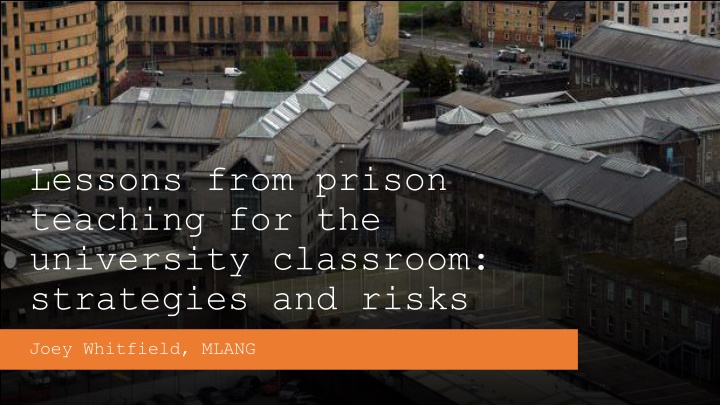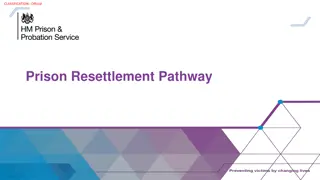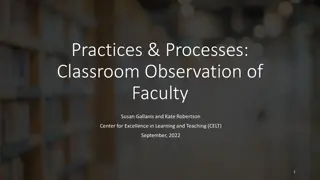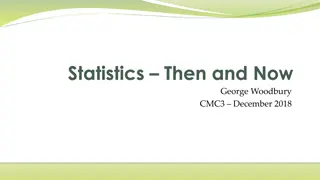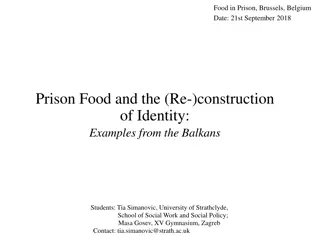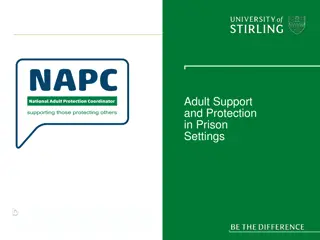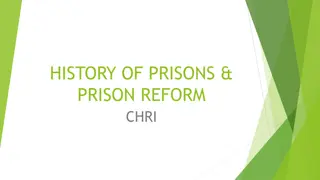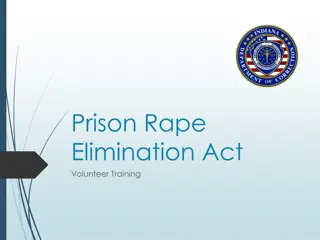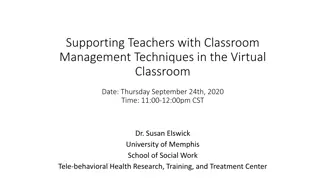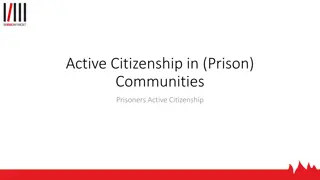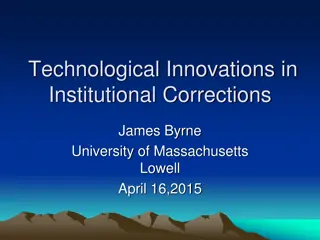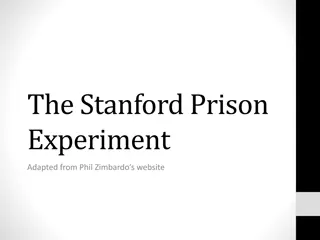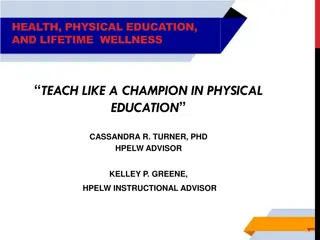Lessons from Prison Teaching for the University Classroom: Strategies and Risks
This article discusses the implementation of a module taught in prison to a class composed of both inside and outside students, focusing on Crime and Social Justice in Global Perspective. It highlights the transformative and experiential pedagogy used, student reflections, and the impact on both inside and outside learners. The approach challenges preconceptions, encourages critical thinking, and fosters a deeper understanding of crime and justice issues. Experiential learning methods, such as discussing challenging topics and using personal experiences, provide a thought-provoking and engaging educational experience.
Download Presentation

Please find below an Image/Link to download the presentation.
The content on the website is provided AS IS for your information and personal use only. It may not be sold, licensed, or shared on other websites without obtaining consent from the author.If you encounter any issues during the download, it is possible that the publisher has removed the file from their server.
You are allowed to download the files provided on this website for personal or commercial use, subject to the condition that they are used lawfully. All files are the property of their respective owners.
The content on the website is provided AS IS for your information and personal use only. It may not be sold, licensed, or shared on other websites without obtaining consent from the author.
E N D
Presentation Transcript
Lessons from prison teaching for the university classroom: strategies and risks Joey Whitfield, MLANG
Module taught in prison to a class composed of an equal number of inside and outside students First developed in 1997 there are now 300+ courses across 25 states in the USA, in Canada and in the UK at Durham and Kent Classes use facilitated discussion and guided group activities Uses transformative and experiential pedagogy Two modules have been delivered in HMP Cardiff with a third beginning next week First with MLANG students, second LAWPL students Crime and Social Justice in Global Perspective Facilitated by me but with guest sessions from colleagues from Social science, Law, Journalism and Media Studies Inside Out teaching in Cardiff
For me, [the gender class] was the class that most challenged my beliefs and preconceptions about the topic in question. I felt quite tired after class, it was really frustrating to talk so in-depth about a topic and still come out with more questions than answers. (Outside student) In my mind crime and punishment are indisputably linked, but why? I had spent my 22 years never questioning this. Why did I believe crime meant punishment? Why not resolution, justice or restoration in certain instance? (Outside student) The way the Crime and Social Justice course unfolds allows the Inside students particularly, to reflect on issues of crime and justice which may have personally affected on them and their loved ones [means] it could even form part of the rehabilitative process. (Inside student) The whole experience has been hugely thought- provoking and thoroughly engaging, often giving me sleepless nights thinking about the day s meetings and topics discussed. I think we ve gone through the full range of emotion, at some of the facts we ve found out. (Inside student) Student Comments
In Crime and Punishment in Contemporary Latin American Culture - research-led literature and film module Creating learning community Classroom manifesto, classroom layout, use of a talking piece, subtle ice-breakers Experiential learning, facilitated active learning , use of personal experience and emotion in the classroom Student feedback: Learning not sort of abstractly academic or a means to a grade or job and that it has wider and more personal relevance! . Lessons in everyday teaching
Experiential learning can be challenging for the unprepared student Cuban revolution exercise Kill the English etc. Icebreaker in the inside out demonstration which upset a participant Conclusion: learning community must be built over time, trust gained Learners in prison are more resilient Risks of experiential teaching
